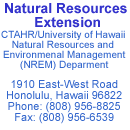
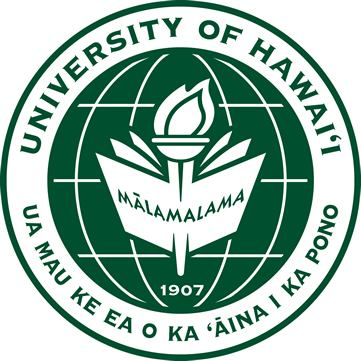

Current Projects
|
|
||||||||||||||||||||||||||||||||
|
|
||||||||||||||||||||||||||||||||
 Hawaii is a member of the Southwest States and Pacific Islands Water Quality Coordination Team |
||||||||||||||||||||||||||||||||
| Hawaii’s component of the Regional Water Quality Research and Extension Coordination |  |
| Principal
Investigator: Carl
I. Evensen, Professor (evensen@hawaii.edu), Department of Natural
Resources and Environmental Management, College of Tropical
Agriculture and Human Resources Funding Source: subcontract with Region IX Water Quality Coordination Grant Project Duration: October 2004—August 2009 The objective of this project is to improve water quality management through educational knowledge and extension programming that emerges from a research base. As a collaborative partner in the Southwest States and Pacific Islands Regional Water Quality Program, the Hawaii Web site is a product of this effort. It is a “living” site that will be updated and expanded on as the region continues to develop and share new and existing management techniques, financial resources, and educational programs. |
|
| Addressing Rainwater Catchment System Issues Through Public Outreach, Water Conservation, and Resource and Infrastructure Development | |
| Principal Investigator: Patricia S. H. Macomber, MPH, Education Specialist (macomber@hawaii.edu), Department of Natural Resources and Environmental Management (NREM), College of Tropical Agriculture and Human Resources (CTAHR). Funding Source: This University of Hawaii project is funded by the USDA CSREES Smith-Lever Act. Project Duration: October 2005-September 2009 This five-year project addresses water quality and quantity concerns for people dependent on rainwater catchment systems for their domestic water supply. Community education and outreach is a fundamental and critical function of this program, which includes having a specialist available to respond to questions and concerns. This project also addresses having a healthy community which contributes to productivity and economic development. Last but not least, this program addresses greater harmony between rural communities and the environment, natural resource management, drought prevention and mitigation. Some of the objectives of this project include: starting a stakeholder association to empower and enhance local communities’ effectiveness in dealing with rainwater catchment issues; bringing national and international expertise to the islands to share knowledge; and providing relevant and useful literature and reference materials to the communities. |
|
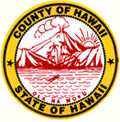 Assisting Rainwater Catchment Systems Users in Hawaii County Assisting Rainwater Catchment Systems Users in Hawaii County |
|
| Principal Investigator: Patricia S. H. Macomber, MPH, Education Specialist (macomber@hawaii.edu), Department of Natural Resources and Environmental Management (NREM), College of Tropical Agriculture and Human Resources (CTAHR). Funding Source: County of Hawaii, Mayor Harry Kim Project Duration: May 2007-October 2008 The objective of this project is to educate the people of Hawaii County about rainwater catchment health and safety. This is accomplished by developing and distributing education materials such as brochures, a service directory, a website, and scheduling and publicizing hands-on workshops and tradeshows with experts. In addition, this grant enables future planning toward the integrated use of rainwater catchment as a sustainable environmental practice by creating a best management practices group of architects, water quality testers, rainwater catchment suppliers, and government representatives. |
|
Completed Projects |
|
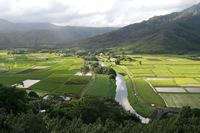 2003 - "Evaluation
of the Performance of Riparian Fencing on Stream Bank Stability
and Stream Water Quality" and "Regional Approaches
to Water Protection from Non point Sources of Microbial Contaminants": Researchers
from the University of Nevada and University of California, Davis
and the Nevada Bureau of Health Protection Services tested the
effectiveness of several management practices, including stream buffers
and sedimentation ponds, with respect to microbial loading. Researchers
at the University of Hawaii evaluated the effectiveness of buffer
strips on preventing microbial and nutrient movement from a grazed
area of tropical setting. Together, the two coordinated projects
evaluated the effectiveness of and need for management practices
in very diverse climatic, vegetative, and soil zones (alpine and
tropical). 2003 - "Evaluation
of the Performance of Riparian Fencing on Stream Bank Stability
and Stream Water Quality" and "Regional Approaches
to Water Protection from Non point Sources of Microbial Contaminants": Researchers
from the University of Nevada and University of California, Davis
and the Nevada Bureau of Health Protection Services tested the
effectiveness of several management practices, including stream buffers
and sedimentation ponds, with respect to microbial loading. Researchers
at the University of Hawaii evaluated the effectiveness of buffer
strips on preventing microbial and nutrient movement from a grazed
area of tropical setting. Together, the two coordinated projects
evaluated the effectiveness of and need for management practices
in very diverse climatic, vegetative, and soil zones (alpine and
tropical). |
|
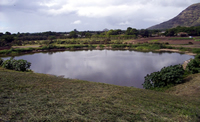 2002 - 2005 Land
Application of Livestock Manures in Hawaii and the American
Pacific: Management
of livestock
manures and
effluent is
a serious concern
for Hawaii
and the American
Pacific due
to limited
land for disposal
and the need
to reduce environmental
impacts. Research is
required to
determine how
nutrients from
manures become
available to
crops and how these nutrients are retained,
released, and
utilized when
applied to
tropical soils.
These research
findings were incorporated
into practical
experiences
via classroom
instruction
to help encourage
farmers to
treat livestock
manures as
a valuable
resource rather
than as a waste. A progress
report is
available for
this project
(pdf file-12
kb). PowerPoint
presentations
on compost
and manure
management
from the 2004
Agriculture
Conference
are also available
for viewing
on the Hawaii's
Regional Water
Quality web
site. Click here to
be taken to
a new a window
outside of
this web site. 2002 - 2005 Land
Application of Livestock Manures in Hawaii and the American
Pacific: Management
of livestock
manures and
effluent is
a serious concern
for Hawaii
and the American
Pacific due
to limited
land for disposal
and the need
to reduce environmental
impacts. Research is
required to
determine how
nutrients from
manures become
available to
crops and how these nutrients are retained,
released, and
utilized when
applied to
tropical soils.
These research
findings were incorporated
into practical
experiences
via classroom
instruction
to help encourage
farmers to
treat livestock
manures as
a valuable
resource rather
than as a waste. A progress
report is
available for
this project
(pdf file-12
kb). PowerPoint
presentations
on compost
and manure
management
from the 2004
Agriculture
Conference
are also available
for viewing
on the Hawaii's
Regional Water
Quality web
site. Click here to
be taken to
a new a window
outside of
this web site. |
|
| 1996 to 2000 - Papaya nutrient management by plant tissue and soil analysis for several soils in Hawaii | |
| 1994 to 1999 - Water quality and nutrient management for irrigated agriculture in Hawaii | |
| 1998 to 1999 - Added value compost cooperative | |
Statewide
livestock nutrient management education project |
|
